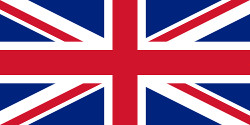
United Kingdom
| Full Name | 3 United Kingdom of Great Britain and Northern Ireland | |
| Alliance | Allies - Major Member Nation | |
| Entry into WW2 | 3 Sep 1939 | |
| Population in 1939 | 47,760,000 | |
| Military Deaths in WW2 | 382,600 | |
| Civilian Deaths in WW2 | 67,800 |
Contributor: C. Peter Chen
ww2dbaseThe horrors of World War I remained in the minds of the British, thus in the 1930s, the leaders of the United Kingdom did all they could to avoid another war. In 1937, appeaser Neville Chamberlain was appointed Prime Minister, who worked along that philosophy. With the backing of many of his peers, as well as contemporaries in other European nations, Chamberlain gave in to Adolf Hitler's increasingly aggressive demands. Some of them even viewed Nazi Germany as a potential future ally to fight the expansionist communist philosophy. Appeasement was not unopposed, however. Some Members of Parliament, notably Winston Churchill, preached that Hitler must be dealt with before Germany threatened peace, but he was not able to sway public opinion enough to change the United Kingdom's diplomatic philosophy. After the fall of Poland and at the same time of the German invasion of France, Chamberlain realized his appeasement attempts truly had failed, and resigned from his post. Churchill was appointed his successor and led the United Kingdom for the remainder of the war.
ww2dbaseWith the support the Commonwealth allies such as Canada, Australia, India, and others, Churchill aimed to maintain presence in North Africa so that the United Kingdom could search out for an opportunity to strike Italy and the Balkans, the weak underbelly of Europe, into the heart of Axis. Meanwhile, the existence of Britain itself was threatened as the Battle of the Atlantic slowly cut away the imports Britain needed to survive. Franklin Roosevelt, the President of the United States, helped by means of the Lend-Lease program, but that could only go so far.
ww2dbaseThe war situation began to change after the United States entered the war after the Pearl Harbor attack. Although the loss of Malaya and Singapore was disheartening and Australia now became in danger of being attacked by Japan, the United States was now an ally in war. It took the United States some time to begin churning her industrial capability, but when she did, the tides of war began to change in favor of the United Kingdom. The American involvement in North Africa helped expelling German and Italian forces from the region, and from there the invasion of Sicily toppled Benito Mussolini's regime. As the Italian Campaign very slowly pushed the German forces back, the Americans persuaded the British to commence a cross-Channel invasion on France, which Churchill, advocate of going through Southern Europe, at first opposed but eventually had to give in. The campaign in France marked the beginning of the end of Germany.
ww2dbaseIn the east, after losing Malaya and Singapore, the United Kingdom also lost Burma to the Japanese. The Japanese Navy posed a threat, too, after its successful excursion into the Indian Ocean. But the Commonwealth of India supported by the United Kingdom held fast, preventing Japan from entering India.
ww2dbaseWhen WW2 ended, the United Kingdom emerged victorious but she was financially damaged. She began losing influence over her overseas possessions one by one, while the United States seemed to have picked up the role of the world leader that the United Kingdom had once held.
ww2dbaseSource: Wikipedia.
Last Major Update: Apr 2007
| Events Taken Place in United Kingdom | ||
| Second London Naval Conference | 21 Jan 1930 - 22 Apr 1930 | |
| Anglo-German Naval Agreement | 18 Jun 1935 | |
| Third London Naval Conference | 9 Dec 1935 - 25 Mar 1936 | |
| Hoare-Laval Pact | 10 Dec 1935 | |
| Polish-British Common Defense Pact | 25 Aug 1939 | |
| Operation Peking | 29 Aug 1939 - 1 Sep 1939 | |
| British Pet Massacre | 3 Sep 1939 - 11 May 1941 | |
| Enigma Code Broken | 14 Jan 1940 | |
| Anti-Italian Riots | 10 Jun 1940 | |
| British Attacks on the French Fleet | 3 Jul 1940 - 25 Sep 1940 | |
| Battle of Britain | 10 Jul 1940 - 31 Oct 1940 | |
| Arctic Convoys | 21 Aug 1941 - 30 May 1945 | |
| Operation Mincemeat | 30 Apr 1943 | |
| Exercise Tiger | 22 Apr 1944 - 28 Apr 1944 | |
| Operation Frantic | 2 Jun 1944 - 22 Sep 1944 | |
| V-Weapons Campaign | 13 Jun 1944 - 30 Mar 1945 | |
| Operation Aphrodite and Operation Anvil | 4 Aug 1944 - 1 Jan 1945 | |
| Territories, Possessions, and Nations Under the Influence of United Kingdom | ||
| Aden | Brunei | Malaya |
| Australia | Burma | Malta |
| Bahamas | Canada | Muscat and Oman |
| Bahrain | Ceylon | Nauru |
| Barbados | Christmas Island | New Hebrides |
| Bermuda | Fiji | New Zealand |
| British Cameroons | Gibraltar | Newfoundland |
| British Guiana | Gilbert and Ellice Islands | North Borneo |
| British Leeward Islands | Guernsey | Sarawak |
| British Palestine | Hong Kong | Singapore |
| British Somaliland | India | South Africa |
| British West Africa | Jamaica | Tonga |
| British Western Pacific Territories | Jersey | Trinidad |
| British Windward Islands | Kenya | |
| Facilities | ||
| 10 Downing Street | Government Building | |
| Bletchley Park | Other | |
| Danesfield House | Other | |
| Debach Airfield | Air Base | |
| Old Buckenham Airfield | Air Base | |
| RAF Newchurch | Air Base | |
| RAF Thurleigh | Air Base | |
| RAF Woodhall Spa | Air Base | |
| ROF Chorley | Factory | |
| Scapa Flow | Navy Base | |
Weather
WW2-Era Weather Data for United Kingdom
Photographs
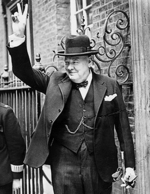 | 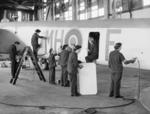 | 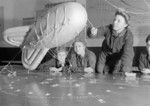 | 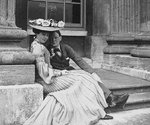 |
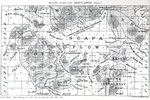 | 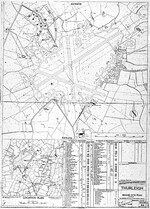 |